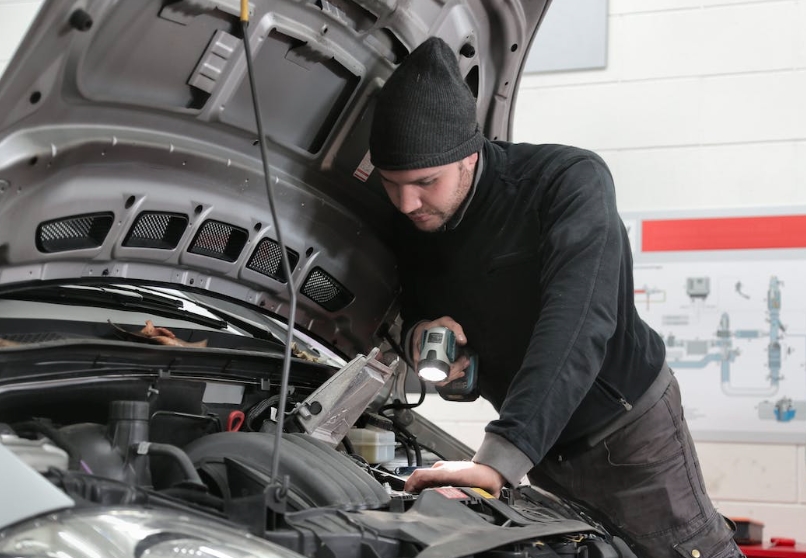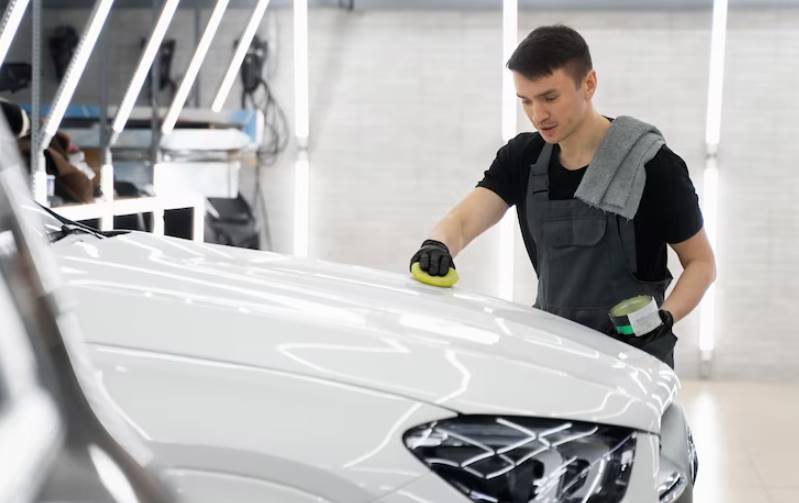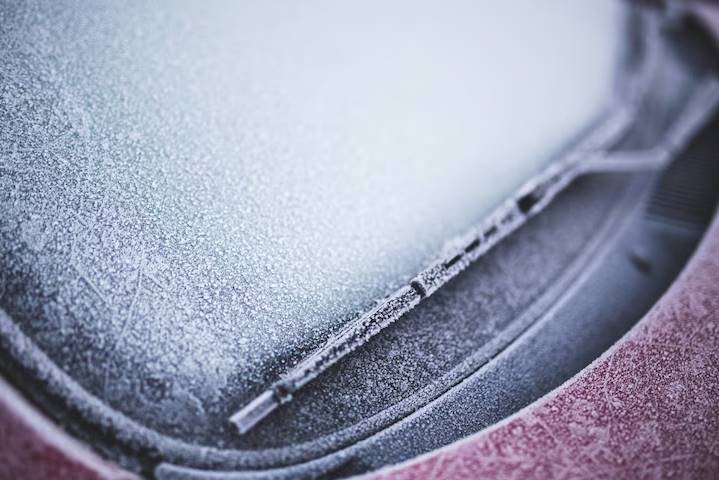Maintaining your car is an important part of ownership. Regular maintenance and repair not only keeps your car running smoothly, but can also help prolong its life and prevent costly repairs down the road. The Ultimate Guide to Car Maintenance and Repair provides everything you need to know to keep your car in top condition. This comprehensive guide covers everything from routine maintenance such as oil changes and tire rotations, to more extensive repairs such as brake and transmission repairs.
We will provide you with step-by-step instructions and clear, helpful illustrations so you can confidently tackle any car maintenance or repair task. We will also provide tips on choosing the right parts and tools, as well as important safety information to help ensure that all repairs are done correctly. Whether you’re a novice or a seasoned mechanic, The Ultimate Guide to Car Maintenance and Repair will provide the information you need to keep your car running efficiently and safely.
Essential Car Maintenance Tasks
1. Regular Oil Changes: Regular oil changes are essential for keeping your car running smoothly and avoiding needless maintenance costs. Oil is the lifeblood of your car, and it needs to be changed regularly to make sure it’s doing its job. The recommended interval for oil changes is every 5,000 miles or 6 months, whichever comes first.

2. Tire Maintenance and Rotation: Tires are an essential component of your car, as they are responsible for keeping you safe on the road. Regularly checking the tread depth and pressure are important, as tires that are not properly inflated can lose their grip on the road and cause an accident. Additionally, it is recommended to rotate your tires every 5,000 miles or 6 months, whichever comes first. This helps to ensure even wear on the tires and can extend the life of your tires significantly.
3. Checking and Replacing Air Filters: Air filters help to keep the air inside your car clean and free of contaminants, and they need to be checked and replaced regularly. The recommended interval for changing air filters is every 12,000 miles or 12 months, whichever comes first.
4. Brake Maintenance: Brakes are an extremely important component of your car, as they are the only way to slow and stop your car. Regularly checking and replacing brake pads and rotors is essential for keeping your brakes in good condition. It is recommended to check your brakes every 10,000 miles or 1 year, whichever comes first.
5. Checking and Topping Off Fluids: Checking and topping off fluids such as coolant, transmission fluid, and power steering fluid is essential for keeping your car running smoothly and preventing costly repairs. You should check the levels of these fluids at least once a month and top them off as needed.
6. Battery Maintenance: Car batteries are an essential component of your car, as they provide the power needed to start your car. Batteries should be checked regularly to ensure they are in good condition and replaced as needed. The recommended interval for checking and replacing your car battery is every 2 years.
Signs of Car Trouble
One of the most important things to keep in mind when owning a car is the potential for car trouble. While regular maintenance and repairs can help to avoid a lot of issues, it is still important to be aware of the warning signs of trouble. This will help to ensure that any issues are dealt with quickly and effectively before they become bigger problems. Here are some of the warning signs of car trouble to look out for:
1. Strange Noises: If your car is making strange noises that are not normal, then this can be a sign that something is wrong. This can include anything from a loud knocking noise to a rattling sound or even a whistling noise. If you notice any of these noises, it is important to have it checked out by a mechanic as soon as possible.
2. Warning Lights: Another warning sign to look out for are warning lights on the dashboard. The most common lights to look for are the check engine light, oil pressure light, battery light, and temperature light. If any of these lights come on, it is important to have the car checked out by a mechanic as soon as possible.
3. Vibrations: If you find that your car is vibrating more than normal, then this can be a sign that something is wrong. This can be caused by a variety of things, such as worn out tires, a faulty suspension system, or a problem with the engine. If you notice any vibrations, it is important to have it checked out by a mechanic as soon as possible.
If you notice any of these warning signs of car trouble, it is important to take action as soon as possible. Taking the car to a mechanic and having it thoroughly inspected is the best way to ensure that any issues are dealt with quickly and effectively. This can help to avoid any major problems down the line and keep your car running smoothly.
Basic Car Repair Skills
How to Change a Tire: Changing a tire is an important skill to have when it comes to car repair. First, you should ensure that the car is parked on a level surface and that the emergency brake is on. Loosen the lug nuts with a lug wrench, and then use a jack to lift the car off the ground. Finally, replace the tire with a new one and make sure to tighten the lug nuts with the lug wrench.
Replacing Windshield Wipers: Replacing windshield wipers is an easy task that can be done in a few minutes. Start by lifting the arms of the windshield wipers off the glass surface. Unhook the old wiper blades from the arms and replace them with the new blades. Make sure to secure them tightly and then lower the arms back onto the glass.
Changing Headlights or Taillights: Changing headlights or taillights is a simple process that requires a few tools. First, you will need to locate the retaining clip or screw that keeps the light in place. Unscrew or release the clip and gently pull the light out of its socket. Replace the bulb with a new one, reattach the retaining clip or screw, and then test the lights to make sure they are working.
Jump-Starting a Car: Jump-starting a car is a great way to get it going again if the battery has died. First, make sure both cars are turned off and then connect the jumper cables to the battery of the car that has a working battery. Then, connect the other ends of the cable to the dead battery. Start the working car and let it run for a few minutes. Finally, start the car with the dead battery and let it run for at least 15 minutes.
Finding a Reliable Mechanic
Tips for Finding a Trustworthy Mechanic
• Research local shops: Look online for reviews from customers who have used the mechanic’s services in the past. This will give you a good indication of the quality of the service and the level of trust that can be placed in the mechanic.
• Ask neighbors and friends for recommendations: People who are familiar with the area and who have had good experiences with particular mechanics can provide valuable insight.
• Look for certifications: Mechanics who have been certified by the National Institute for Automotive Service Excellence (ASE) are highly qualified and trustworthy.
• Check credentials and references: A reputable mechanic will be proud to provide references and/or credentials upon request.
• Visit the shop: Take a few minutes to visit the shop and talk with the mechanic. Look around to see how the shop is kept and how the mechanics interact with each other.
How to Communicate Effectively with a Mechanic
• Be prepared: Have all the necessary paperwork and information ready before taking the car in for repair.
• Describe the problem in detail: Describe the issue in as much detail as possible. If you have any paperwork or diagnostic codes, make sure to provide those as well.
• Be specific about what you want: Make sure to be very clear about what type of repair you are expecting and ask for an estimate ahead of time.
• Ask questions: Don’t be afraid to ask questions if you don’t understand something. A trustworthy mechanic will be happy to answer any questions you may have.
• Trust your instincts: If something doesn’t feel right, it probably isn’t. Go with your gut and find another mechanic if necessary.
Common Scams to Watch Out For
• Unnecessary repairs: Some mechanics may try to convince you to repair parts that don’t actually need to be repaired. Be sure to ask for a detailed explanation of the repairs that are being suggested.
• Replacing parts with used ones: Some mechanics may try to replace new parts with used ones in order to save money. Make sure to ask where the parts are coming from and insist on new parts if necessary.
• Inflated labor charges: Some mechanics may try to charge you for more labor than was actually required for the job. Be sure to get an itemized statement of the labor charges.
• Charging for unperformed services: Some mechanics may try to charge you for services that were never actually performed. Ask to see the work and/or the parts that have been replaced if you are unsure.
• Unnecessary diagnostic fees: Some mechanics may try to charge you a diagnostic fee even if the problem is obvious. Be sure to ask if the diagnostic fee is necessary before agreeing to pay it.
Preventative Measures
Tips for Avoiding Car Trouble in the First Place
1. Regular Maintenance: Taking your car to a certified mechanic for regular maintenance is the best way to ensure that your vehicle will remain in good working order. This includes changing the oil and filters, checking the brakes and tires, and other general tune-ups. Additionally, you should consider checking the fluids, belts and hoses, and other parts regularly, as well as having all recalls performed when recommended.
2. Safe Driving Habits: It is important to practice defensive driving habits, such as avoiding sudden stops and starts, turning and accelerating smoothly, and staying within the speed limit. Additionally, you should be aware of other drivers on the road and be prepared to take evasive action if necessary. You should also be aware of potential hazards, such as potholes, and drive accordingly.
Preparing for Seasonal Changes
1. Winterize Your Vehicle: During the colder months, it is important to make sure that your car is winterized. This includes making sure that all of the fluids, such as antifreeze, coolant, and motor oil, are at the correct levels. Additionally, you should check the battery, tire pressure, and belts and hoses to make sure that they are in working order.
2. Prepare for Hot Weather: During the warmer months, it is important to make sure that your car is prepared for hot weather. This includes checking and replacing worn and damaged parts, such as the air conditioning system and belts and hoses. Additionally, you should make sure that the fluids, such as the coolant, engine oil, and transmission fluid, are at the correct levels.
Advanced Car Repair Skills
Replacing a Battery or Alternator: Replacing a battery or alternator is not an easy task. It requires knowledge and skills to properly diagnose the underlying issue and select the right product for the job. First, you will need to identify the type of battery or alternator you need for your vehicle. You will need to locate the battery or alternator in the engine compartment and remove the necessary hardware to gain access to it. After the hardware is removed, you can disconnect the battery or alternator from the wiring harness. You will then need to properly install the new battery or alternator and reconnect it to the wiring harness.
Diagnosing and Fixing Common Engine Problems: Diagnosing and fixing common engine problems is not an easy task. It requires a thorough understanding of the engine components and their workings. To begin, you will need to review the vehicle’s service manual and ensure that all parts and components are in proper working order. You will need to check for any signs of wear or damage and any loose connections. Once you have reviewed the manual, you will need to properly diagnose the issue and take appropriate action. This may involve replacing faulty parts, resealing components, or repairing wiring or connections.
When to Seek Professional Help Instead: Professional auto mechanics can provide invaluable assistance when it comes to advanced car repair skills. In some cases, seeking professional help is the best option for dealing with complex issues. This may be the case if the problem is too complex for your own expertise or if the repair is beyond your skill level. In addition, professional mechanics can provide advice and guidance on the best course of action for dealing with the problem. Additionally, they can provide access to specialized tools or equipment that may be necessary for completing the repair.

Tools Every Car Owner Should Have
Essential tools for basic car repairs and maintenance
Every car owner should have basic tools in order to make basic repairs and maintain their car in proper condition. Some of the essential tools that every car owner should possess include:
• Jack – A jack is used to lift the car off the ground to access components that are located underneath the car. It is important to ensure that the jack is of good quality and is rated to lift the weight of the car.
• Lug Wrench – Lug wrenches are used to loosen and tighten the lug nuts on the wheels. They are usually shaped like a cross or a star and come in different sizes and shapes.
• Ratchet and Socket Set – Ratchet and socket sets are essential tools that are used to loosen and tighten nuts and bolts on the car. The ratchet is a handle that the socket is attached to, and the socket is the part that actually fits over the nut or bolt.
• Screwdrivers – Screwdrivers are used to remove and install screws on the car. They come in different sizes and shapes and are used to access various components on the car.
• Pliers – Pliers are used to grab, twist and turn various components on the car. They come in different sizes and shapes and are used for a variety of tasks.
• Wrenches – Wrenches are used to tighten and loosen nuts and bolts on the car. They come in different sizes and shapes and are used for a variety of tasks.
• Hammer – A hammer is used to remove and install nuts and bolts, as well as to pound on components if necessary. It is important to make sure that the hammer is of good quality and is not too heavy or too light for the job.
• Flashlight – A flashlight is used to access components that are hard to see in dark areas of the car. It is important to make sure that the flashlight is of good quality and is rated to withstand the environment of the car.
• Utility Knife – A utility knife is used to cut wires, hoses, and various other components on the car. It is important to make sure that the utility knife is of good quality and is rated to withstand the environment of the car.
How to use these tools effectively
When using these tools, it is important to make sure that they are used in the correct manner. This means using the correct size and type of tool for the job, as well as using the correct amount of force. It is also important to make sure that the tools are stored in a safe and secure place when not in use. Additionally, it is important to make sure that the tools are cleaned and lubricated on a regular basis in order to keep them in good condition. Finally, it is important to practice caution when using the tools and to always keep safety in mind.
Conclusion
By following the steps in The Ultimate Guide to Car Maintenance and Repair, you can ensure that your car runs more efficiently, is more reliable, and lasts longer. Regular maintenance and repair can not only save you money in the long run, but also give you peace of mind knowing that your car is safe and in good condition. In addition, regular maintenance and repair can help you avoid costly repairs down the road.
No matter how well you take care of your car, there will always be the need for occasional repairs. But with the right knowledge, tools, and resources, you can make sure that your car is always running at its best. The Ultimate Guide to Car Maintenance and Repair has provided you with the information and tips necessary to do just that. By following the guidelines laid out in this guide, you can ensure that your car is safe, reliable, and efficient for years to come.
FAQs
1. What are the most important car maintenance tips?
The most important car maintenance tips are changing the oil, maintaining the correct tire pressure, checking and replacing air filters, getting regular tune-ups, and checking your brakes.
2. How often should I get my car serviced?
Generally, it is recommended to have your car serviced every 12 months or 12,000 miles, whichever comes first.
3. How often should I change my oil?
It is recommended to change your oil every 3,000 miles or every 3 months, whichever comes first.
4. What is the best way to check my car’s tire pressure?
The best way to check your car’s tire pressure is to use a tire pressure gauge. You can check the tire pressure at least once a month and make sure the tire pressure matches the recommended pressure for your vehicle.
5. How often should I rotate my tires?
It is generally recommended to rotate your tires every 5,000 to 8,000 miles.
6. How often should I check my car’s air filter?
It is recommended to check the air filter every 12 months or 12,000 miles, whichever comes first.
7. What is the best way to check my car’s brakes?
The best way to check your brakes is to inspect the brake pads and discs. You should also check the brakes for any signs of damage or wear and tear.
8. How often should I get my car tuned up?
It is generally recommended to get your car tuned up every 12 months or 12,000 miles, whichever comes first.
9. How often should I check my car’s battery?
It is recommended to check your car’s battery every 6 months or 6,000 miles, whichever comes first.
10. What is the best way to check my car’s fluids?
The best way to check your car’s fluids is to use a dipstick to check the levels of oil, coolant, and other fluids. You should also check the color of the fluids to make sure they are not contaminated.


















